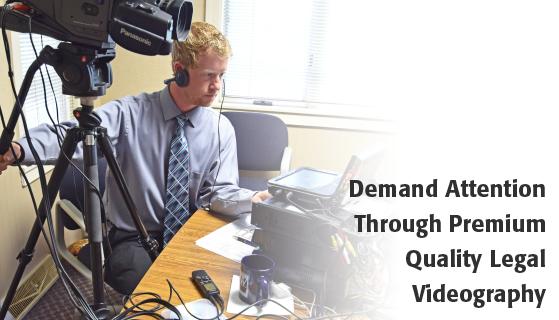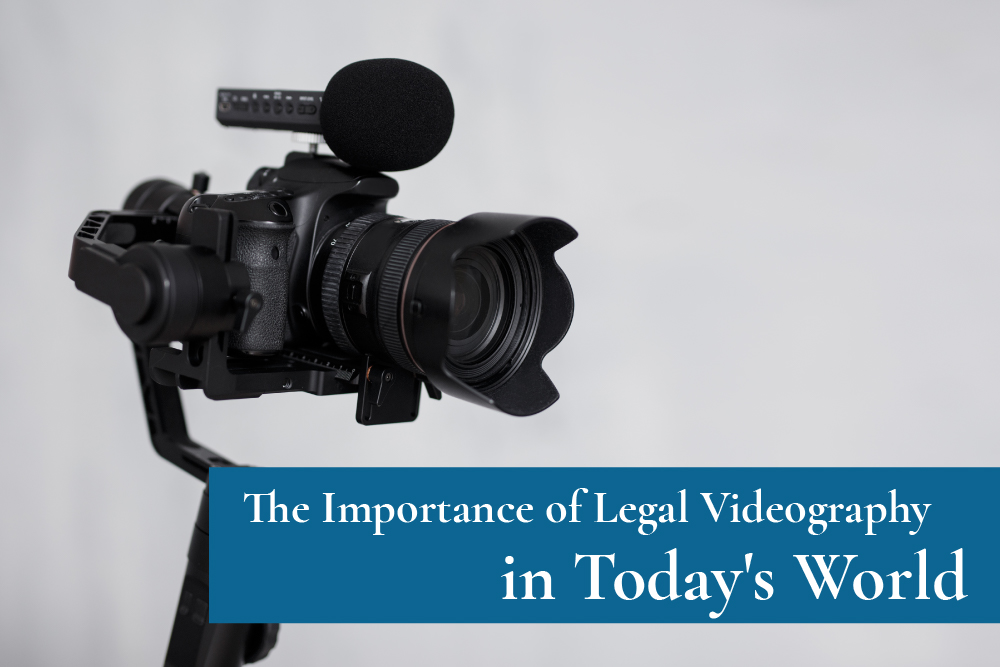Comprehending the Value of Videography in Legal Procedures
The integration of videography into lawful proceedings has emerged as a considerable element in the presentation and analysis of evidence. By capturing aesthetic elements such as body language and face expressions, videography boosts the narrative surrounding witness testimonies and can exceptionally influence jury assumptions.
Duty of Videography in Evidence
Videography plays a progressively crucial duty in lawful proceedings, functioning as a powerful medium for offering evidence. The assimilation of video clip recordings into the lawful framework permits a much more dynamic depiction of facts, allowing jurors and judges to envision occasions as they took place. This aesthetic documentation can include a series of materials, including monitoring video, videotaped witness testaments, and professional presentations, every one of which can significantly boost the evidentiary landscape.
One of the primary benefits of videography is its ability to catch nuances that might be shed in created accounts. Facial expressions, body language, and situational context can provide important understandings, assisting to convey feelings and purposes that message alone can not. The use of video clip evidence fosters a much more engaging courtroom experience, potentially assisting jurors in comprehending intricate cases.
As modern technology breakthroughs, the top quality and ease of access of videographic proof have actually boosted, making it an indispensable component of modern-day legal practices. Courts progressively identify the value of video clip as a reliable source of information, prompting lawyers to adjust their approaches for proof presentation. Inevitably, videography offers not only to show truths yet also to enhance the general honesty of the judicial process.

Enhancing Reputation and Quality
A significant advantage of integrating videography in lawful procedures is its capacity to enhance both trustworthiness and clearness of evidence offered in court. Videographic evidence can capture nuances that created records may ignore, such as tone, body movement, and context. This aesthetic depiction allows juries and courts to much better understand the scenarios bordering the instance, thus cultivating a much more precise understanding of the events concerned.

Furthermore, the clearness managed by videography decreases the chance of misconception that can arise from textual summaries. This precision is specifically critical in complex instances, where information can be easily misinterpreted. Eventually, by presenting proof in an aesthetically available format, videography not only strengthens the honesty of the judicial procedure yet likewise supports informed decision-making by those involved in legal proceedings.
Influence On Jury Perception
The incorporation of videographic proof considerably influences jury perception, commonly bring about much more engaged and notified deliberations. Jurors are commonly more receptive to aesthetic details, which can boost their understanding of intricate situations. Videography offers facts in a way that is both engaging and accessible, allowing jurors to get in touch with the my review here proof on a much more personal level.
Moreover, the capacity to witness events as they occurred can evoke emotional responses that composed records or spoken statements might fall short to evoke. This emotional involvement can lead jurors to create stronger viewpoints concerning the integrity of witnesses and the general narrative of the instance. The graph of evidence also helps in clarifying uncertainties, making it much easier for jurors to realize the context and importance of the details offered.
Moreover, videography can offer as a powerful device for storytelling, enabling attorneys read to build a persuasive narrative that resonates with the court. When jurors can imagine situations and witness vital moments, their capacity to purposeful thoughtfully and get to an educated verdict is significantly enhanced, inevitably impacting the outcome of legal process.
Best Practices for Legal Videography
Implementing ideal practices in lawful videography is necessary for making sure that visual proof is both effective and trustworthy in the courtroom. Select certified professionals that specialize in lawful videography to make certain the technical high quality of the recordings. This consists of utilizing high-resolution cams and expert audio tools to record clear visuals and noise.
Second, preserve proper documents throughout the recording procedure. This involves producing an in-depth log that consists of timestamps, summaries of the content, and the identities of all people existing. Such documents can strengthen the authenticity of the video.

Additionally, consider using suitable modifying techniques. While it is critical to preserve the original material, minor changes for clarity-- such as improving audio degrees-- can boost the general presentation without altering the substance.
Future Trends in Legal Videography
As legal videography continues to progress, arising techniques and technologies are shaping the future landscape of visual evidence in the court room (Legal Videography). One substantial trend is the integration of high-definition and 4K video clip quality, improving the clearness and detail of taped statements and evidence. This enhanced resolution aids jurors in thoroughly assessing the reputation of witnesses and the subtleties of the presented materials
In addition, the use of synthetic intelligence (AI) in video analysis is gaining traction. AI tools can aid in determining vital minutes in video footage, creating transcripts, and even evaluating non-verbal interaction, which gives much deeper understandings into witness trustworthiness. Digital reality (VR) and augmented fact (AR) are poised to revolutionize just how evidence is provided, allowing jurors to submerse themselves in criminal offense scenes or situations, thus fostering a much more profound understanding of the context.
Verdict
In summary, videography acts as a crucial device in lawful process, boosting the presentation of evidence and enhancing the general understanding of situations. By recording non-verbal cues and boosting the integrity of witness accounts, videography substantially affects jury perception and decision-making processes - Legal Videography. Abiding by finest techniques guarantees the efficiency of lawful videography, while arising fads assure to more increase its function in the judicial system, ultimately fostering an extra informed and involved legal setting
Videography plays go to my site an increasingly critical function in lawful proceedings, serving as a powerful medium for presenting proof.A considerable advantage of incorporating videography in legal proceedings is its ability to enhance both reputation and clearness of proof provided in court. Ultimately, by providing evidence in a visually easily accessible layout, videography not only strengthens the integrity of the judicial procedure but additionally sustains educated decision-making by those entailed in legal procedures.
In recap, videography offers as an important tool in lawful process, improving the presentation of proof and enhancing the general understanding of instances. Legal Videography. Sticking to best practices ensures the effectiveness of lawful videography, while arising patterns promise to further augment its duty in the judicial system, inevitably promoting a much more informed and involved legal setting